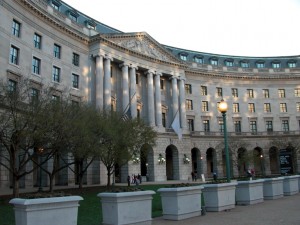30
Oct
Inspector General Finds EPA Pesticide Petition Process Plagued by Delays
(Beyond Pesticides, October 30, 2015) The Environmental Protection Agency’s (EPA) Office of Pesticide Program (OPP) needs policies and procedures to manage pesticide petitions in a transparent and efficient manner, according to new report that highlights inadequacies in the way the agency responds to petitioners. The report, published by EPA’s Office of Inspector General, an independent office within EPA that investigates agency compliance with laws governing its programs, concludes that the lack of transparency and efficiency “leaves petitioners unaware of petition status, which can result in unreasonable delay lawsuits costing the agency time and resources.”
 While the public has the right to submit pesticide petitions to EPA and the agency is required to respond to these petitions “within a reasonable time,” there are no set requirements for what constitutes a specific time frame. However, petitioners can file a lawsuit claiming unreasonable delay if the petitioner finds that EPA has not responded within what the petitioner considers a reasonable amount of time. Of the 40 public petitions received by OPP from Fiscal Year 2005 through 2014, nearly a quarter of them are associated with unreasonable delay lawsuits. The specific issues contributing to these delays involve:
While the public has the right to submit pesticide petitions to EPA and the agency is required to respond to these petitions “within a reasonable time,” there are no set requirements for what constitutes a specific time frame. However, petitioners can file a lawsuit claiming unreasonable delay if the petitioner finds that EPA has not responded within what the petitioner considers a reasonable amount of time. Of the 40 public petitions received by OPP from Fiscal Year 2005 through 2014, nearly a quarter of them are associated with unreasonable delay lawsuits. The specific issues contributing to these delays involve:
- Petition documentation not being readily accessible;
- Some of the petition data were inaccurate, leading to more work being required to confirm data;
- Lack of guidance on how to submit petitions directly to OPP, leading to weeks of delay in petitions arriving at the correct office for action; and
- OPP does not provide public guidance on how to submit complete petitions, which resulted in petitioners providing supplemental information, and increased the time and resources to reach petition decisions.
In August, a federal appeals court judge mandated that EPA respond to a petition filed nearly nine years ago that seeks to force the agency to restrict the dangerous insecticide chlorpyrifos (an organophosphate also known as Dursban). U.S. Court of Appeals Judge for the Ninth Circuit, M. Margaret McKeown, stated that federal agencies should never practice the “venerable tradition” of putting off statutory requirements when it comes to human health. Another recent instance of egregious delay involves EPA’s issuance this summer of a long-awaited response to a Citizen Petition filed by Beyond Pesticides and Food and Water Watch in 2010, denying the request to cancel registered products that contain the antibacterial pesticide triclosan. In 2014, Beyond Pesticides joined Center for Food Safety in filing a lawsuit against EPA over the agency’s failure to regulate novel nanomaterial pesticides. The lawsuit challenged the agency for its failure to answer a 2008 petition filed by more than 13 organizations.
The report recommended that the Assistant Administrator for Chemical Safety and Pollution Prevention “develop policies and procedures to manage public petitions in a transparent, effective, and efficient manner; communicate directly with petitioners; train staff to adhere to the Records Management Policy; implement an effective tracking system for public petitions; and provide guidance to the public on how to submit petitions with sufficient data for review.”
Beyond Pesticides believes that local and grassroots action is one of the best ways to reduce pesticide use and its harmful effects in communities. The outpouring of grassroots support from around the country after the passage of local laws, like that in Montgomery County, exemplifies the important of local laws in the protection of health and the environment, as government regulators, the chemical industry, and the chemical lawn care industry see to thwart action. Beyond Pesticides encourages residents to become aware of national efforts to undermine critical health and environmental laws, and to take action in their community to fight for these important public health and environmental protections. Click here to show your support for a pesticide-free community.
All unattributed positions and opinions in this piece are those of Beyond Pesticides
Source: EPA










